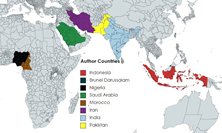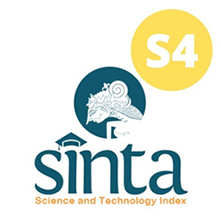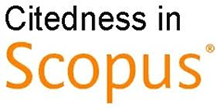Non-contact Respiration Monitoring Using Bio- Radar Sensor Based on Linear Regression Classifier
Abstract
Tuberculosis (TB) is an infectious disease that mainly attacks the lungs, caused by the bacterium Mycobacterium tuberculosis. To reduce its spread, hospitals use special rooms for TB patients and health workers follow strict Standard Operating Procedures (SOP). Recent advances in medical technology have led to the development of contactless respiratory monitoring techniques, such as bio-radar sensors that utilize the Doppler principle to detect lung movement. This research aims to explore the application of bio-radar sensors for contactless respiratory rate monitoring and then combine it with machine learning methods, specifically using linear regression algorithms, to translate bio-radar output into measurable respiratory rate values. By training a regression model using a processed raw data set to identify inspiration and expiration, where 1 is inspiration and 0 is expiration. To test the performance of the contactless breathing module, it was compared to a patient monitor. The module and comparison tool were run simultaneously with 10 measurement distance points for 10 patients or respondents with each distance point taken three times. The data that has been obtained from the results of comparisons between modules and comparison tools is entered into machine learning data analysis techniques, namely accuracy, precision and recall. The accuracy results were 74.9%, precision 71.4% and recall 83.3%. This research has proven that bio radar can be used to detect lung movement.

This work is licensed under a Creative Commons Attribution-ShareAlike 4.0 International License.
Authors who publish with this journal agree to the following terms:
- Authors retain copyright and grant the journal right of first publication with the work simultaneously licensed under a Creative Commons Attribution License that allows others to share the work with an acknowledgement of the work's authorship and initial publication in this journal.
- Authors are able to enter into separate, additional contractual arrangements for the non-exclusive distribution of the journal's published version of the work (e.g., post it to an institutional repository or publish it in a book), with an acknowledgement of its initial publication in this journal.
- Authors are permitted and encouraged to post their work online (e.g., in institutional repositories or on their website) prior to and during the submission process, as it can lead to productive exchanges, as well as earlier and greater citation of published work (See The Effect of Open Access).











